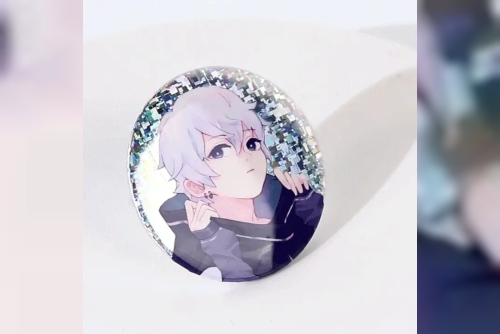Button pins have been an enduring symbol of advocacy and social movements for decades. These small, circular badges carry powerful messages, making them a vital tool in the fight for social justice, political change, and community building. Their simplicity and accessibility allow individuals to express their beliefs, support causes, and unite with others in the pursuit of common goals. In this article, we’ll explore the role of button pins in advocacy and social movements, tracing their history, examining their impact, and offering insights into how they continue to be relevant in today’s world.
The History of Button Pins in AdvocacyThe use of button pins for advocacy can be traced back to the early 19th century. Initially, they were used to promote political candidates and causes. Over time, their role expanded, and they became a popular medium for expressing support for various social movements.
Notable Historical Examples:
Suffrage Movement: In the early 1900s, women’s suffrage activists used button pins to campaign for the right to vote. These pins often featured slogans like “Votes for Women” and became a symbol of the fight for gender equality.
Civil Rights Movement: During the 1960s, button pins played a significant role in the Civil Rights Movement in the United States. Activists wore pins with messages like “I Am a Man” and “Freedom Now” to demand racial equality and justice.
Anti-War Protests: The Vietnam War era saw a surge in the use of button pins as anti-war protesters wore pins with slogans like “Make Love, Not War” to express their opposition to the conflict.
The Power of Button Pins in AdvocacyButton pins are more than just decorative accessories; they are powerful tools for advocacy. Here’s why they are so effective:
1. Visibility and AccessibilityButton pins are highly visible and can be worn on clothing, bags, and accessories, making them a constant reminder of the cause they represent. Their small size and low cost make them accessible to a wide audience, allowing anyone to participate in the movement.
Accessibility Benefits:
Affordable: Button pins are inexpensive to produce, making them an affordable way for individuals and organizations to spread their message.
Portable: Their small size makes them easy to distribute and wear, ensuring that the message can reach a broad audience.
Example: During the LGBTQ+ rights movement, rainbow flag button pins became a widely recognized symbol of pride and solidarity. They were easily accessible and allowed individuals to show their support for LGBTQ+ rights in everyday settings.
2. Personal ConnectionWearing a button pin is a personal statement. It signifies that the wearer identifies with the cause and is willing to publicly express their support. This personal connection fosters a sense of belonging and community among those who share the same beliefs.
Community Building:
Unity: Button pins help create a sense of unity among advocates. When people see others wearing the same pin, it reinforces the feeling that they are part of a larger movement.
Empowerment: Wearing a button pin can be empowering, giving individuals a sense of agency in the fight for social change.
Example: The Black Lives Matter movement saw widespread use of button pins featuring the BLM logo. These pins served as a way for supporters to show solidarity with the movement and connect with others who shared their commitment to racial justice.
3. Message AmplificationButton pins have the unique ability to amplify messages. A single person wearing a pin can spark conversations, raise awareness, and inspire others to take action. When many people wear the same pin, the message becomes even more powerful.
Message Amplification Techniques:
Slogans and Symbols: The design of the pin, including slogans, logos, or symbols, is crucial in conveying the message effectively.
Viral Potential: Button pins have the potential to go viral, especially when they are used in high-visibility events or by influential figures.
Example: The “Me Too” movement, which began as a hashtag on social media, was supported by the distribution of button pins featuring the phrase “#MeToo.” These pins helped spread the movement’s message of standing against sexual harassment and assault.
Button Pins in Modern Advocacy and Social MovementsIn today’s digital age, the role of button pins in advocacy has evolved, but they remain a relevant and impactful tool. Here are some ways they continue to be used in modern movements:
1. Integration with Digital CampaignsWhile social media and digital campaigns have become the primary tools for advocacy, button pins complement these efforts by providing a tangible representation of the cause.
Digital Integration Strategies:
Hashtags on Pins: Including hashtags on button pins can bridge the gap between physical advocacy and online activism, encouraging people to share their support on social media.
QR Codes: Adding QR codes to pins can direct people to websites, petitions, or donation pages, making it easier for them to engage with the movement online.
Example: Environmental activists have used button pins with QR codes that link to petitions or educational resources about climate change. These pins encourage wearers and those who see them to take further action online.
2. Use in Protests and RalliesButton pins remain a staple at protests and rallies, where they are often distributed to participants. These events provide an opportunity for widespread visibility, as the pins are worn by large crowds and often appear in media coverage.
Protest and Rally Tips:
Mass Distribution: Distribute pins in large quantities at rallies to maximize visibility.
Event-Specific Designs: Create pins tailored to specific events or causes to make them more relevant and impactful.
Example: During the Women’s March, organizers distributed button pins featuring empowering slogans like “The Future is Female.” These pins became iconic symbols of the march and were widely shared on social media and in news coverage.
3. Collaborations with Artists and DesignersCollaborating with artists and designers to create unique button pins can enhance their appeal and reach a broader audience. Artistic designs can attract people who might not have been previously engaged with the cause but are drawn to the aesthetics of the pin.
Collaboration Ideas:
Limited Edition Pins: Partner with well-known artists to create limited edition button pins that can be sold to raise funds for the movement.
Artistic Interpretations: Allow artists to reinterpret the movement’s message through their designs, offering a fresh perspective.
Example: Amnesty International has collaborated with artists to create button pins that raise awareness about human rights issues. These collaborations have resulted in visually striking pins that resonate with both art lovers and advocates.
ConclusionButton pins have played a significant role in advocacy and social movements throughout history, and they continue to be powerful tools for social change. Their ability to convey messages, foster unity, and amplify voices makes them indispensable in the fight for justice and equality. Whether used in protests, digital campaigns, or everyday life, button pins offer a simple yet effective way for individuals and organizations to advocate for the causes they care about. As social movements continue to evolve, the humble button pin remains a symbol of solidarity, resistance, and hope.












